What is the Scope of Sustainable Communities in India?
Info: 10919 words (44 pages) Dissertation
Published: 25th Oct 2021
CONTENTS
CHAPTER 1: introduction to Self-sustainable systems
- Introduction and research question
- Aim, objective, scope, limitations
- Research methodology
CHAPTER 2: Self-sustainable communities and its components
- What are self-sustainable communities?
- Why work in communities?
- Components of self-sustainability in Indian context
CHAPTER 3: ASSESMENT CRITERIA FOR ANALYSIS
3.1 Studying assessment methods used by other rating systems or author
3.2 Final list of assessment criteria
CHAPTER 4: CASE STUDIES AND ANALYSIS
4.1 Case study of Govardhan Eco village
4.2 case study of Auroville
4.3 Case study of Silua Tek
4.4 Assessment checklist
CHAPTER 5: CONCLUSION
CHAPTER 1: INTRODUCTION TO RESOURCE-SUSTAINABLE SYSTEMS
1.1 INTRODUCTION
The topic of the research is resource-sustaining communities. The term sustenance can be explained as something that is able to produce whatever it needs and also decompose or reuse its waste or by-product.
It is essential to research on these techniques or ‘ways of living’. Instead of filling the cavity that we empty from nature, we are only creating more waste. Thus in process of solving our smaller problems of everyday life, we are creating bigger issues which are further difficult to deal with. Earth in itself is a big system which produces and consumes in itself, hence the biggest example of a self –sustaining organism. Nature shows how nothing is ever a waste and that what is waste for one is food for other. The concept has come to be called as Cradle to cradle.
By designing proper systems in which the waste can be used again as raw material we can considerably deal with the problem. Hence all the elements of a system are interconnected and contribute to each other. Their cyclic or interconnected nature is the key to achieving self-sustainability. Also by using the materials in their basic and non-processed forms, we decrease our need for energy and the amount of waste. By using more passive techniques which directly use natural elements, we can reduce the use of active technologies.
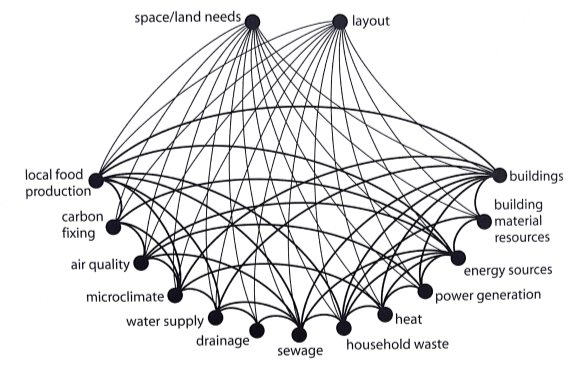
Figure 1 The interconnection between various components of a human habitat
Source: Barton, Grant, Guise, 2010
Sustainability does not always mean producing green buildings, because often the backstory in such buildings is different from what is displayed. Even if a building is consuming lesser energy because of double glazed glass, the embodied energy of that glass needs to be arbitrated. Hence, sustainability needs a new approach. It might be going back to the old vernacular ways of living, or combining the regional and modern ways of habitation. Since nothing stays permanent in this world, the future means of sustainability need to be adaptive and flexible.
RESEARCH QUESTION
What is the scope of sustainable communities in India?
1.2 AIM
To assess sustainability of communities based on various chosen parameters and find the difficulties, if any, faced by these communities.
OBJECTIVES
- To understand self-sustainable communities and identify their major elements.
- Understanding how the elements affect self-sustenance.
- Develop a check list for assessing a self-sustainable community.
- To perform case studies of communities which aim to be sustainable. Assess them based on the check list.
- Thus draw a comparison between them and conclude by giving the major factors which hinder the growth of sustainability in a community.
SCOPE
- This study talks about environmental sustainability of a community. Hence, components and case studies are identified based on resource management and impact it has on the environment.
- The study only talks about small communities with population less than 5000 people.
- The study is focused on communities in rural or semi-urban context.
- For case study, communities which are self-sustainable even in some aspects are taken. Communities which aim and work to become sustainable are considered.
- The assessment of the communities is comparative and based on the understanding of author after the research.
- The intent of this dissertation is to identify the scope of sustainable communities in India.
LIMITATIONS
- The assessment of community does not tell the comparative importance of different criteria.
- Due to limitation of time, communities which are far off cannot be visited personally.
- Sustainable communities are only beginning to emerge in India and hence case studies are limited.
1.3 RESEARCH METHODOLOGY
The dissertation talks about the concept of self-sustainable communities and the basic factors that affect the functioning of these communities. To further understand these communities, a few case studies shall be done. In the end, the research will be concluded by combining the leanings from the research and case studies.
- The first chapter will give a brief introduction of the topic and identify the requirements for a detailed understanding of the topic.
- The second chapter will discuss the definitions of various important terms (e.g. self-sustainability and communities) by architects, environmentalists etc. This concludes on a final single definition which is used for further research in this study. It then talks about the components of self-sustainability and how each of these components contributes towards sustainability.
- Third chapter identifies a list of relevant criteria that can be used to assess these communities. This is done by looking at assessment criteria used by other recognized associations or authors in similar context. The final checklist to be used is derived after a thorough understanding of these sample lists
- The fourth chapter includes case studies of communities which are applicable to the context of sustainability. They were chosen based on some recognition by national, international or local authorities. To be able to get a more accurate and diverse picture, it has been intended that the communities are of different sizes, densities and economic degree.
- The fifth chapter gives the conclusion derived from the assessment of the communities. The conclusion comes by commenting on the level of success of sustainable communities in India. It talks about what are the hurdles that these communities are facing and what are their most successful feats.
CHAPTER 2: SELF-SUSTAINABLE COMMUNITIES AND ITS COMPONENTS
What are self-sustainable communities?
Littlewood (1998) defines sustainable communities as,
‘The village would be a balanced community for people of all ages and incomes, where people can live, work, and enjoy a vibrant community life, the majority without the need to commute and where everyone could feel a sense of personal belonging. It would provide affordable housing, work opportunities, food production, energy and water conservation as well as self-reliance for its residents in an ecologically aware and sensitive way.’
The internationally based eco-villages network stresses a permaculture approach to the human/environment relationship, and a very high degree of local autonomy for food, energy and water (Barton, 2000).
Barton (2000) says,
‘Both village and city people wish for a place, a neighborhood where they feel they belong: an attractive, convivial and healthy place that balances privacy with community and local provision with city access. The picture is that of sustainable neighborhood: emphatically not an inward looking claustrophobic enclave but rather a local homely part of the global village.’
Sustainable development is about maintaining and enhancing quality of life through social, economic and environmental means. The resources being used should be within the carrying capacity of the eco-system. To be successful in the quest for sustainability it is important to take all three into account and work simultaneously (Barton, Grant, Guise, 2010).
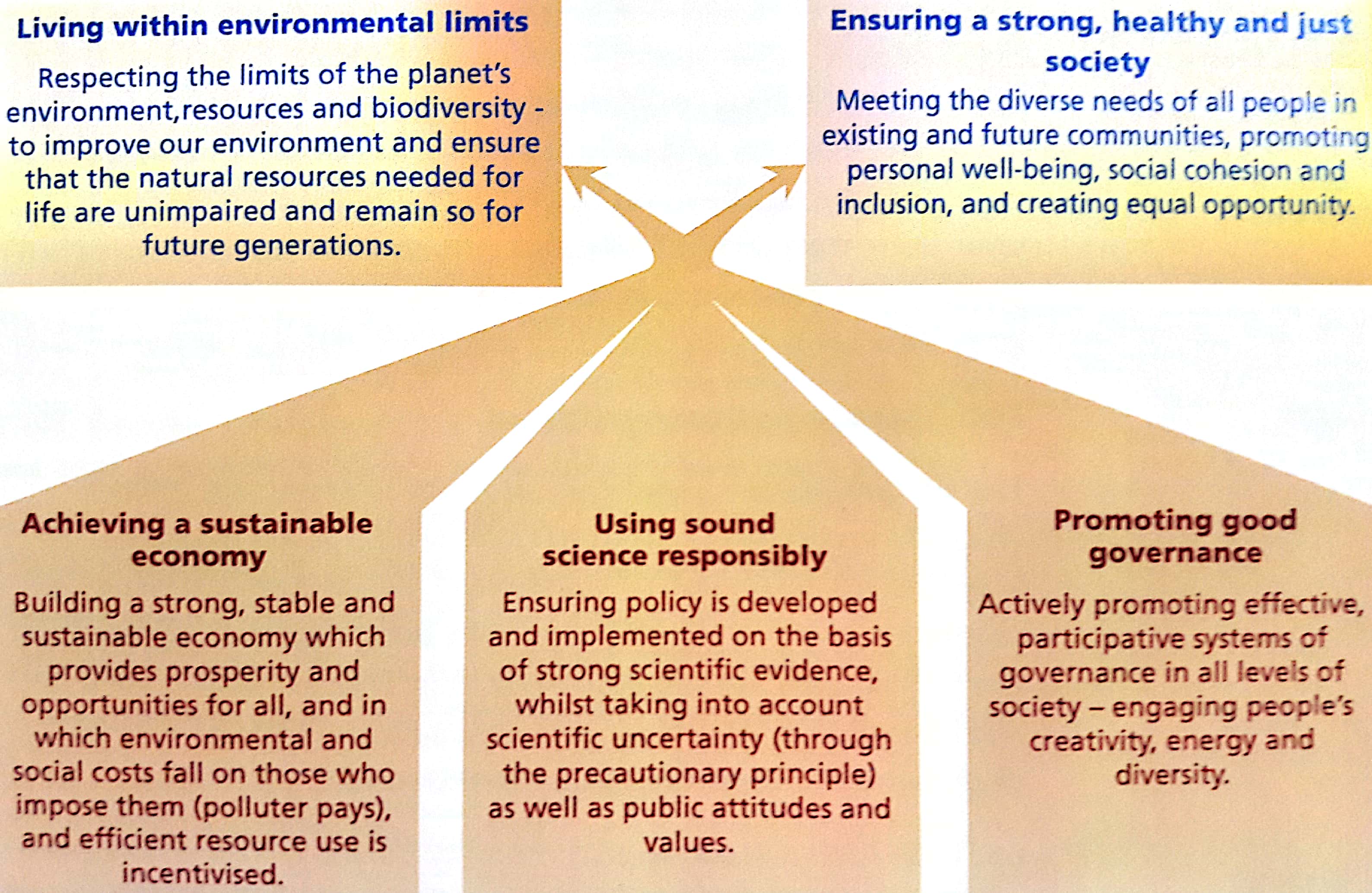
SOURCE: Barton, Grant, Guise, 2010
Calthorpe (1993) describes his vision of a sustainable neighborhood,
‘The alternate to sprawl is simple and timely: neighborhoods of housing, parks and schools placed within walking distance of shops, civil services, jobs and transit- a modern vision of the traditional town. The convenience of the car and opportunity to walk or use transit can be blended in an environment with local access for all the daily needs of a diverse community. It is a strategy which could preserve open space, support transit, reduce auto traffic, and create affordable neighborhoods.’
Taylor (2000) states that one way of constructing a way of life which is more sustainable is to construct more local ways of living, for if the inhabitants of an area also work, play, go to school and shop within their locality then, obviously, they will travel less and so not draw on non-renewable and/or polluting energy resources to get around. They can walk, or cycle, instead of going by car or bus. So the idea of eco-village is really a short hand for denoting a form of life in which people’s activities are based, to a much greater extent than now, in their locality.
According to Barton (2000), the basic need of sustainable development is to rediscover the link between places and their context, seeing the design and management of every area reflecting its locale in terms of landscape, ecology, water and energy. Secondly, it is important to revive the functional significance of locality. A locality functions by interaction among the people and using localized services. This reduces the consumption of resources and energy. He also emphasizes on inviting the citizens/community groups to devise the plans and programs for their community.
It is to be emphasized that for a community to be self-sustainable, the things that we artificially produce need to be in a cyclic process. Artificially produced things need more energy for fabrication and disintegration, which makes them unsustainable. Therefore, if we are producing such things, we need to make sure that we use the energy consumed efficiently. In other words, we cannot discard such things to environment until we make full use of them and retrieve back all the consumed energy. Also, we need to give attention to what we decompose to the environment because artificial things also need more energy for disintegration.
Why work in communities?
Community is a group of people who have something in common. They share common interests based on region, ancestors, practices, religion, thinking etc.
Hugh Barton (2000), talks about integrated solution instead of an isolated solution for sustainability. By doing things as a community, several common problems are solved immediately. Thus the significance of a community lies in its functioning. A small example of these is the increased use of pedestrian pathways. In small locality where the activities of people are based near to their living places, people tend to use pedestrian pathways more. This in turn has many positive effects on the environment. This reduces the number of cars on the streets, creating a clean atmosphere for the residents. If foot-travel is encouraged in the community, vehicular roads can be converted into pedestrian pathways and cycle tracks which save multiple resources. This includes the vital land resource a lot of which goes into making wide roads.
Community stake holding is the key element to achieving sustainability (Barton, 2000). Decentralization of resources and giving the lead to local leaders/residents can help in approaching self-sustainability. In communities where people themselves control their energy and food resources, they tend to be more responsible towards them. It allows them to take control of their resources and they often want to choose the more healthy and sustainable means. Thus when a conventional resource changes to a community resource, it comes to be used more cleanly and efficiently (Barton 2000).
It is easier for a community to acquire a loan or government approval compared to an individual. Formation of small scale companies/industries in communities also makes them more self-reliant by creating opportunities for jobs and businesses.
PERMACULTURE- THE NEW WAY OF LIFE
Permaculture is a new sustainable way of growing food which takes its inspiration from nature. It does not see growing food as an individual practice but as in conjunction with energy, water, people and houses. Things in nature do not require involvement and do not pollute its environment. It tends to cycle everything. The waste of one is food for another. Anything that cannot be used by another is considered a waste. The idea is to create cycles of waste and water in such a way that they perform multiple functions throughout the cycle.
Designers can play a role in planning communities which have spaces to carry out these functions. By keeping the layout of the community such that the food that is being grown is easily looked over by the people living nearby can be one way. The trees being grown should be fruit trees or other trees which can provide some useful product, the trees needing more care being nearer to people’s houses. Trees can shade the walkways and roads. House plot can be provided with a gardening area. If land available is less, rooftop gardens and community parks can be provided. An active cycle of recycling and composting is needed and places in the community for these activities to happen. This space should be accessible to everyone but measures need to be taken to avoid visual contact and foul smell. Using this method, a large amount of waste in a region can be recycled. The areas where water tends to collect can be made into lakes which store this water for later use (Barton, 2000).
Components of self-sustenance
There are certain aspects which determine the self-sustenance of a locality. Firstly, the fulfillment of basic needs like food and water is most important. If a community is able to produce/collect food and water for itself, it meets the basic criteria for self-sustainability. Other parameters include waste management, energy production and means of transient in ecologically sustainable ways. For strengthening the community another significant factor is the employment and governance. If there are small scale industries in a community, it provides employment to the people in their own locality without depending on outside sources. This ensures their long term sustainability. The governance is essential because if the local people are part of decision making bodies for their community, they tend to be more responsible and thoughtful. These components are described further.
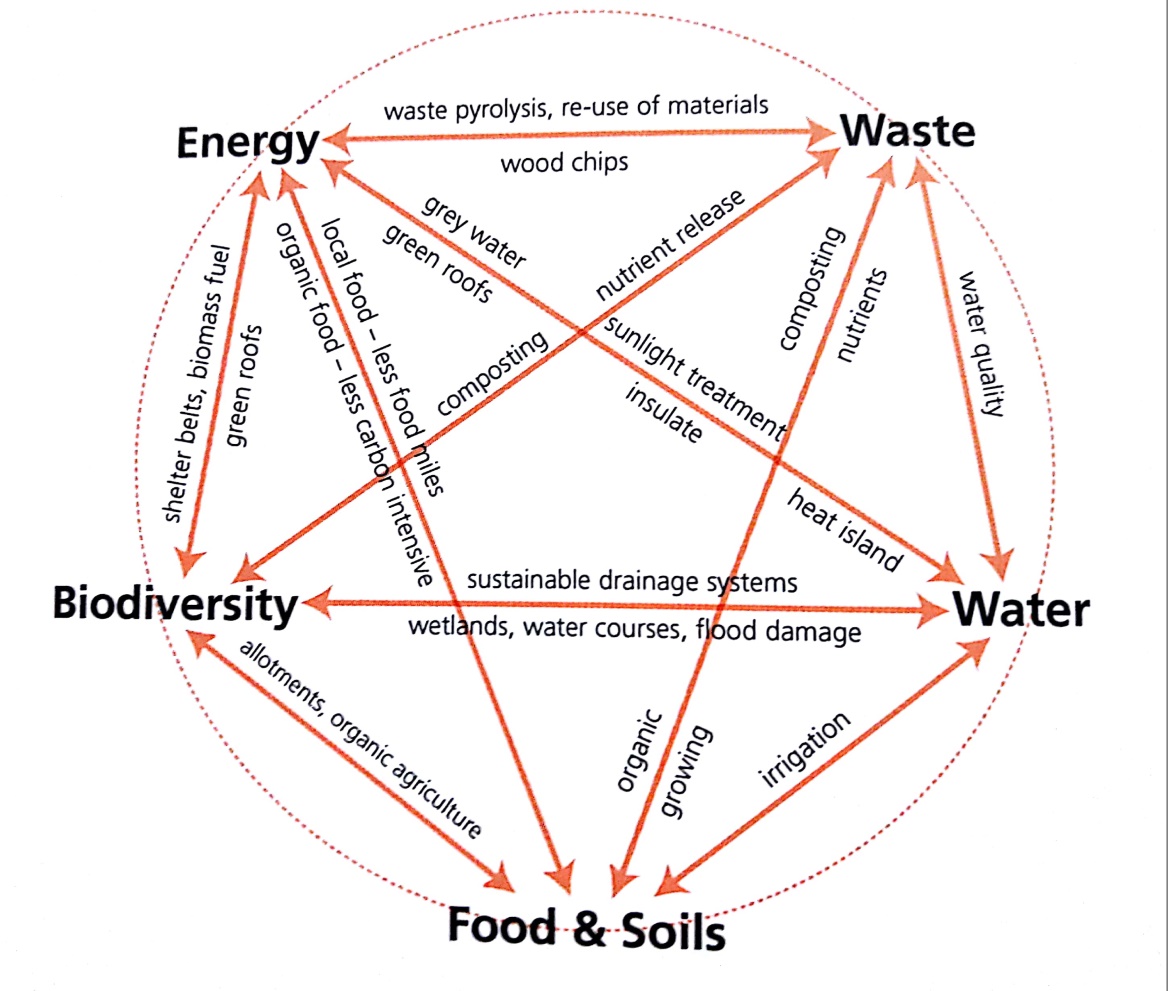
Interrelation between various resources
Source: Barton, Grant, Guise, 2010
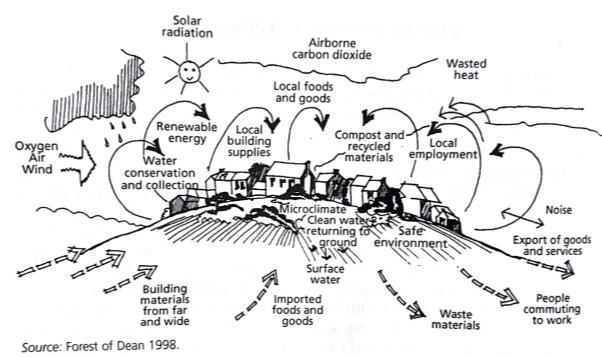
Fig. Small settlements as an ecosystem
(Barton, 2000)
- Food production
An important aspect of a self-sustainable community is food production. Locally produced food can feed the community and reduce its dependence on outside sources of food. Food that is brought from long distances is unsustainable. A recent phenomenon which talks about sustainability is the concept of ‘Food miles’. A study by Stefanie Boge in Germany calculated the distances that all the components of a strawberry yoghurt travel to reach the site of manufacturing and then to the end user. The distance added up to the alarming figure of 3494km. This comprehends something about the packaged food products that we consume on a daily basis. A food product is unsustainable if it has to travel a long distance before it is consumed.
Food growing when integrated with other aspects of community life and sustainability can solve many other problems. Barton (2000, p.202) says, ‘Integrate water, waste, employment, recreation, housing, energy generation, wildlife and so on into a whole system.’ Growing food can become a part of buildings by application of thoughtful design. Compost from organic waste can be used for increasing soil productivity. The food gardens can become a part of community parks where the community as a whole tends to them. Through constructed wetland systems, they can be used to clean water.
- Water supply
The most important resource for meeting basic needs is water. Lately, the renewable water cycle is disrupted because of many unnatural practices. Covering the ground with non-porous materials prevent the recharge of aquifers. Contamination of surface water is yet another troublesome issue which is happening due to waste disposal in water bodies or excessive use of pesticides.
This raises some serious concerns about water management and sustainability. If carefully managed, the water cycle can be smoothly revived. The steps to be taken depend on the major water sources in the locality.
Surface run off is to be avoided and storm water needs to be collected and stored. Catchment areas need to be revived so that water can collect. The ground cover needs to be porous so that water can penetrate and recharge water table. Appropriate measures need to be taken to treat grey water so that it can be recycled. Sewage can be used for composting which can further be used for food production.
- Waste management
The amount of waste we generate everyday is increasing at an alarming rate. This creates the problem of its disposal as a large amount of it is not easily degradable. The key to it is that the waste for one industry can be taken as raw material for other. Most of the inorganic waste we produce can be easily taken up in other cycles and behaves as raw material for them. Other waste can be recycled or reused. Environmentalists have long been talking about the 3 Rs- reduce, recycle, reuse. A fourth R has been recently added – Recover.
Construction industry is a major producer of waste which needs to be treated. The use of recycled or reused materials should be increased on construction sites. Packaging and embodied energy (e.g. in transportation) of the materials being used should be analyzed. Buildings which are easy to dismantle produce less waste and most of this is reusable.
Organic waste can also be used as biofuel for producing energy. Biofuels are best used in community based power stations because the waste is locally produced or from farming. They provide energy through anaerobic digestion or combustion.
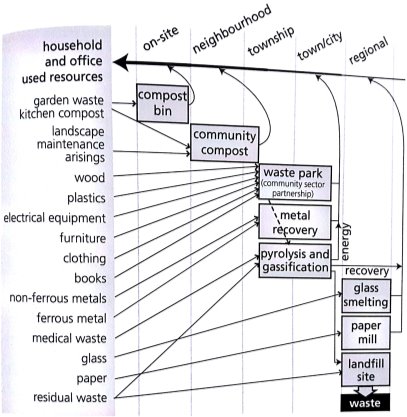
Source: Barton, Grant, Guise, 2010
- Built spaces: construction techniques and materials
Studying the sustainability of construction materials is one way to approach sustainability since they are major contributors in determining the same when it comes to built habitat. Gautam (2010) stressed on the fact that for an ordinary person, the longevity and upkeep of the house is more important compared to the sustainability. This explains something about why people restrain from using materials which are sustainable in the long run and hence gives a clue of how to approach sustainable materials of the future.
Even though alternate technologies are being developed, the construction companies are hesitant in using them, posing direct questions to their durability, cost-effectiveness and capabilities. This implies that it is important to talk about these materials in detail, their specifications, usability, strengths and weaknesses. Developing alternate technologies is also a step towards reducing wastes from different industries because it is often used as raw material for these alternate construction techniques.
Goswami (2009), talks about how the region affects human habitation in a place. It shows how simple and modest it can be to create something that is sustainable. To create communities which can sustain themselves, it is important to know how the energy consumed can be reduced in any possible way. While designing something sustainable in the present world, the key is to merge the traditional ideas with modern technolgy. Climate is the most important issue here. Site and context determines the material and the construction techniques.
Goswami (2009) talks about the concept of climatic scale. It relates the climate to the housing typology in a region. In hot and humid regions, the basic need is to avoid radiation and provide ventilation. Hence the type of habitation that came into existence is a shaded hammock. Without any walls, air can freely move through it keeping the space comfortable on humid days. On the other hand is the igloo, which can maintain temperature difference of 15-20 degrees inside the space in the coldest climates. They use the notion of stratification of air. The living space is made at an upper level where the warm air rises. Some communities, like the Luri tribes of Iran, change the form of their dwelling as the season changes throughout the year. Basically a tent made of goatskin, the cloth is removed and covered according to temperature and wind flow.
The way of preserving land as an important productive resource can be seen in a Mishing house (a pre Ahom Assamese community). A mishing house has a fixed length in one direction and the other side increases or decreases with the change in number of inhabitants. Thus no piece of land is wasted, and every person uses as much land as it needs. The self-sustenance can be seen in the house planning of a medieval Assamese house. Each Assamese household has at least 1 bigha of land, next to river. The planning was such that every house had an unavoidable courtyard and kitchen garden. Each house approachable by a boat and had a tank (pukhuri), which was used for fulfilling water based needs. This can be seen as an example of making each household to sustain by itself, by producing its own food, collecting and using its own water (Goswami, 2009).
- Energy production and transport
The limited availability of our conventional energy resources and the environmental degradation they cause are serious concerns faced by the present generation. Thus it is essential to reduce energy demands and increase the use of sustainable energy resources. We use energy in form of services like heating, cooling, transportation, lighting etc. we need to rethink on how many of these services actually need energy and how much of it can be replaced by other means (Barton, Grant, Guise, 2010).
Barton (2000, p.191) says,
‘While the ‘traditional’ renewable energy sources such as wind, solar and hydro can be valuable sources of energy to a sustainable community, the most readily accessible resources that could be considered as ‘renewable’ are waste products.’
There are various methods by which waste can be converted into energy. Organic wastes can be dealt by anaerobic digestion which produces heat and electricity. Combustible wastes like wood scraps and paper can be incinerated to produce energy. Offices and industries produce a lot of heat which goes untapped. If an effective way of accumulating this energy is devised, it can be used to meet energy requirements. These methods create ‘cleaner’ energy along with cleaning the environment. This also boosts the local economy giving more employment. It also makes the user responsible for the type and amount of energy he is using. Resources and money stay within the community (Barton, 2000).
As designers and architects, one can design the infrastructure and spaces for these activities to happen. While planning localities, space can be allocated for these functions to take place.
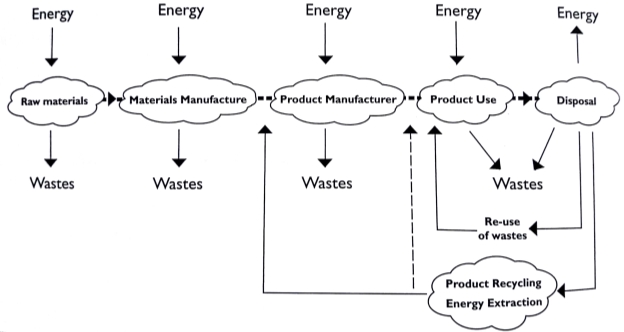
(Edwards, 2001)
Accessibility and movement within the community is yet another factor which is indirectly dependent on energy and resource consumption. To reduce the resources that go into transportation, it is important to localize the basic facilities of daily usage. In other words, the distances for carrying out the daily activities for a person should be such that they can be covered by foot or bicycle. Not only the distances but the path and locality needs to be designed such that it becomes more pedestrian friendly and encourages the user to walk. Shaded pathways, interactive activities on the edges can urge people to take alternative means of travelling through the community.
- Employment and governance
The economic stability of the residents also determines the sustainability of the community. If there are enough employment opportunities within the community, nobody has to go out for work. They produce and consume in their own locality hence localizing the processes. If people are working in their own locality they are producing commodities for their own community and hence reduce its demand for any external supplies. Thus, it goes both ways, and the residents are benefitted both as producers and consumers.
Governance comes into play because it shapes how the community will be involved in the sustainable activities. To increase participation, the community needs to motivated which happens when the people are directly involved in the decision making process. Instead of an exterior governing body, a body of local representatives should be established to take decisions related to community issues. This makes the local people feel more responsible towards their resources and they also feel encouraged to take initiatives toward their better usage.
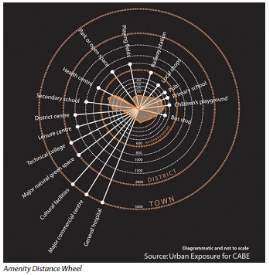
HAMMARBY SJOSTAD, SWEDEN
Hammarby is a district in Stockhom, Sweden which is being developed as an urban sustainable community. Earlier an industrial waterfront, the restoration of this site started in 1996. It housed 8,715 people in 2006.
The Hammarby model talks about ‘closed loop urban systems’ where in all the functions of a community are connected and interdependent but are fulfilled within the community. The main elements of this functioning are food, water and waste.
The aim of this development is to create a large scale community which uses half the amount of energy used in a typical development and is twice as better in terms of reduced environmental impact. Improving public transport, net zero energy impact, water and waste management are some of the major targets of the development.
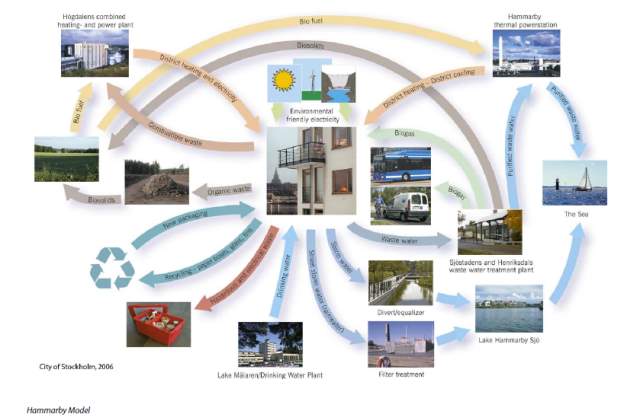
Source: Hammarby Sjostad case study
To do the quantitative analysis of the environment and lifestyle in the community the project team developed Environmental Load Profile (ELP). This would record the activity of the residents and calculate the environmental load from a whole city district (Forseberg, 2003).
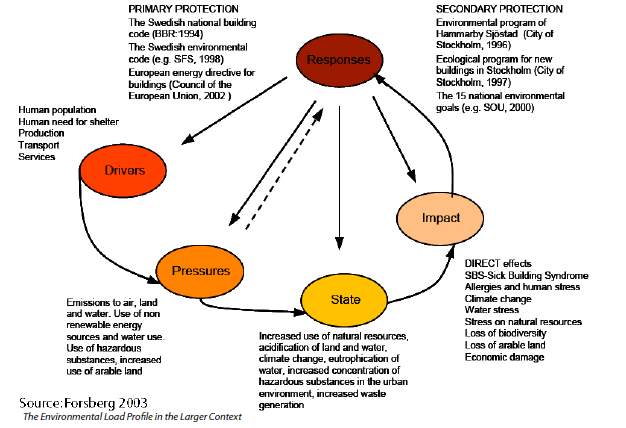
CHAPTER 3: ASSESSMENT CRITERIA
GRIHA RATING SYSTEM
SS 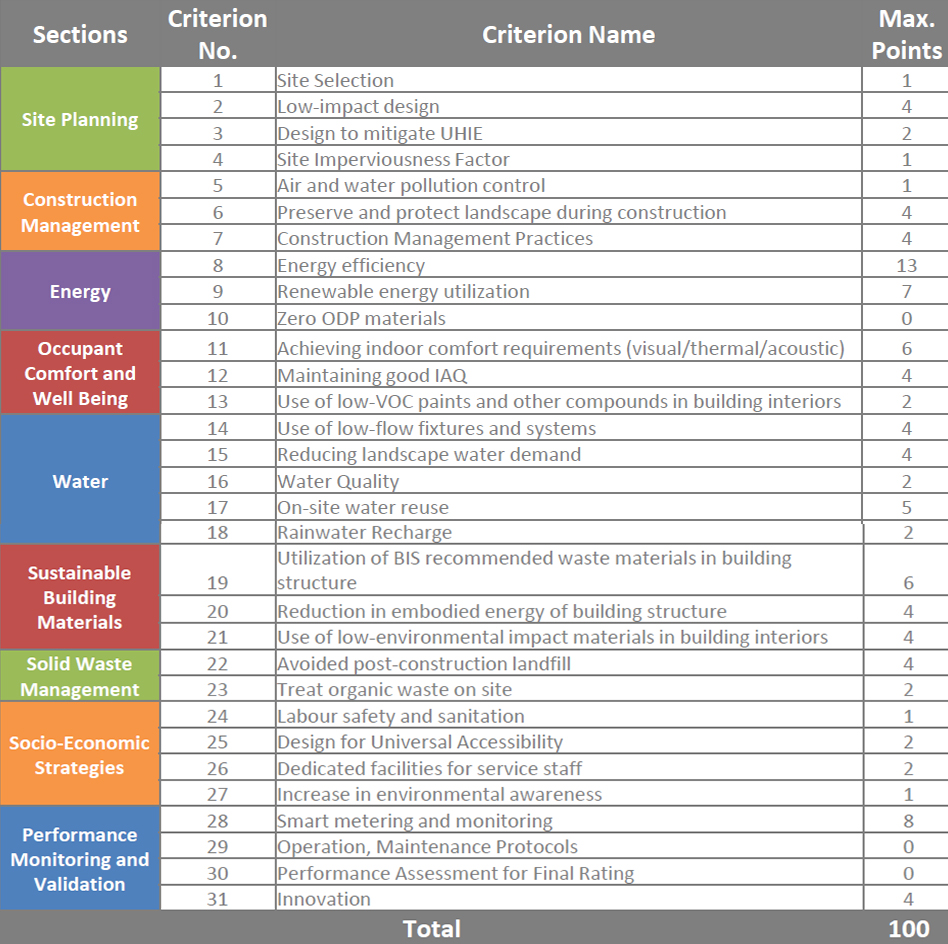
Source: GRIHA version 2015
GRIHA LARGE DEVELOPMENT
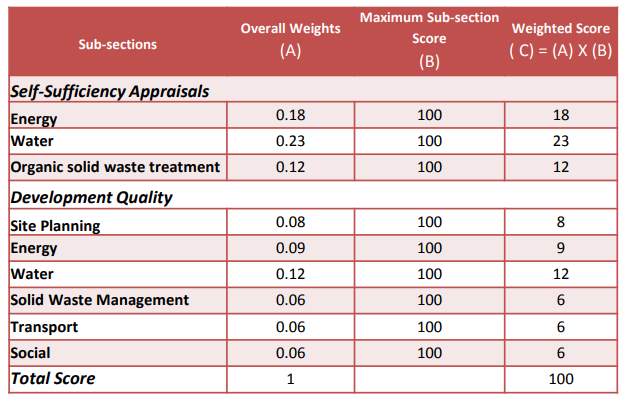
SOURCE www.grihaindia.org/files/GRIHA-LD-V2015.pdf
LEED FOR NEIGHBORHOOD DEVELOPMENT PLAN
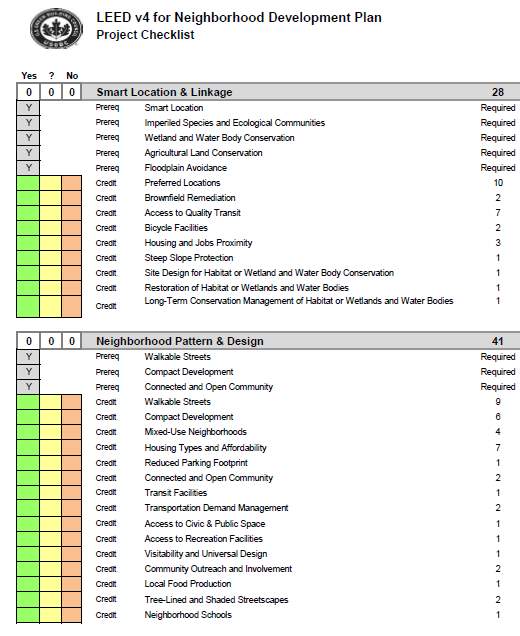
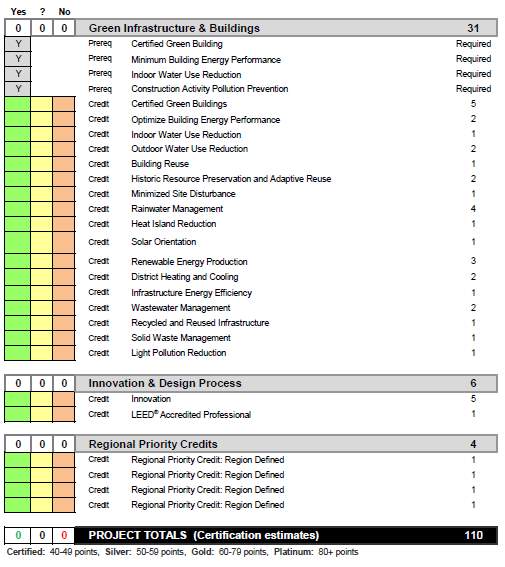
source:https://www.usgbc.org/resources/leed-v4-neighborhood-development-checklist
ASSESSMENT CRITERIA USED IN SUSTAINABLE COMMUNITIES BY HUGH BARTON
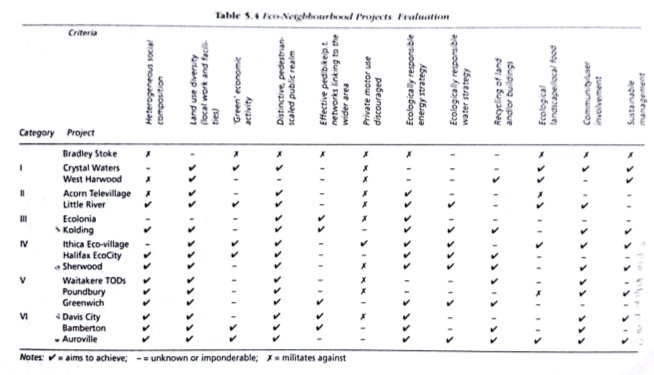
Source: Barton, 2000
ASSESSMENT CRITERIA FROM A REPORT PRESENTED IN PLEA 2014
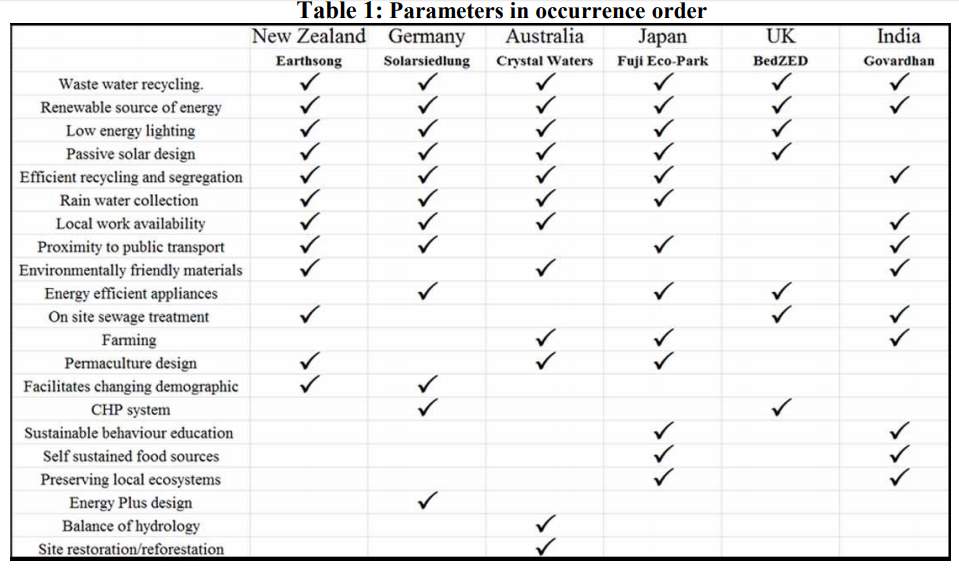
Source:http://www.plea2014.in/wp-content/uploads/2014/12/Paper_1B_2253_PR.pdf
ASSESSMENT BY BRIAN EDWARDS
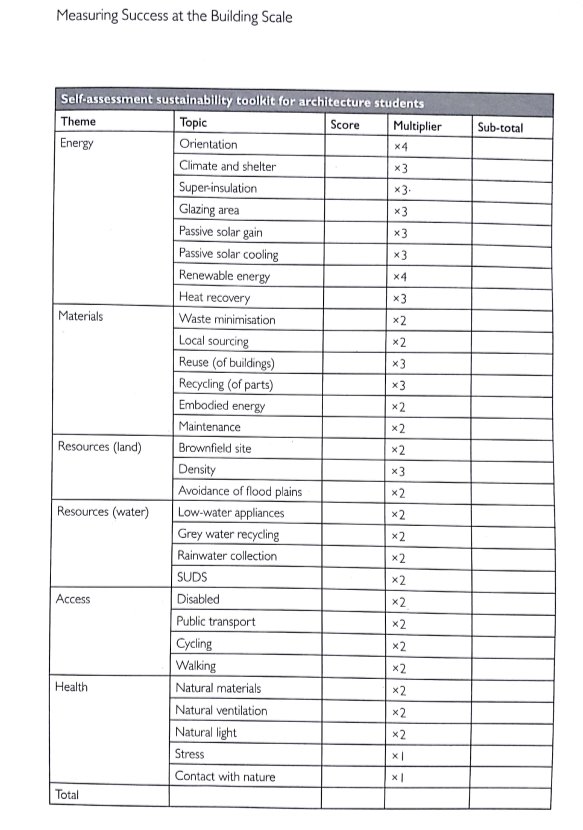
Source: Edwards 2001
FINALISED LIST OF ASSESSMENT CRITERIA
- CONSTRUCTION MATERIALS
- Local sourcing– This criteria keeps a check on what is the radius within which the material has been sourced. It is important because it tells about the embodied energy of the material being used for construction.
- Low environmental impact– Materials which have low environmental impact are encouraged. Materials which consume more energy in disintegration (e.g. plastic) or use unsustainable raw materials can be considered as high environmental impact materials.
- Low embodied energy– materials which have use low energy from the beginning till implementation on the site. This includes obtaining the raw materials, transportation of raw material, processing of raw materials, and implementation on site. All these further sub-divide into processes that consume energy.
- Recycled/reused materials– construction materials using reused or recycled waste is an attempt towards reducing waste produced from another process.
- ENERGY PRODUCTION
- Renewable– communities which are producing a part of their energy requirements by using renewable methods.
- Efficiency in using (equipments)- if they promote use of efficient equipment in their large scale and small scale activities.
- Climate responsive– if they are using climate responsive ways of living/construction which in turn reduces energy demands.
- WATER EFFICIENCY
- Efficiency in using water-
- Recycling/ reuse/ treatment
- Water collection schemes- schemes employed for enhancing ground water recharge or surface collection of water.
- LAND USE
- Restoration/ brownfield site
- Density
- Environmental planning
- Land use
- FOOD PRODUCTION
- Local/ external production- how much of the food requirements of the community are met from local production.
- Chemical free production
- Healthy (sustainable) farming practices- using techniques which put lesser pressure on soil and keeps it healthy.
- WASTE
- Collection- if the community employs proper waste collection methods. This is the first step towards further processing it and keeping the community clean.
- Recycle/reuse/treatment
- organic
- inorganic
- ACCESSIBILTY
- Cars- How much of movement in the town/ village is done majorly by cars.
- Bicycle and pedestrian friendly
- Public transport- availability of public transport for local commuters
- Alternative fuel
- SOCIO-ECONOMIC SITUATION
- Environmental awareness
- Employability/community involvement- what is the economic situation of the residents and what is their level of involvement in community activities.
- Meters and monitoring
- Health conditions
- POLLUTION LEVELS
- Water
- Air
- Soil
CHAPTER 4: CASE STUDIES
GOVARDHAN ECO VILLAGE, MAHARASHTRA
Govardhan eco village is a 70 acre sustainable farming community on the foothills of Sahyadhri Mountains. It follows the concept eco-centric development. It aims to combine the traditional practices and modern practicality to achieve sustainable development. The concept comes from the Vedas which emphasize that the life processes on Earth are not anthropocentric (human centered) but eco-centric (where are all the organisms are interrelated to each other). Hence, each organism or element has a role to play to keep everything balanced.
The functioning and organization of village is very systematically divided among some major activities which are then carried out in a sustainable manner.
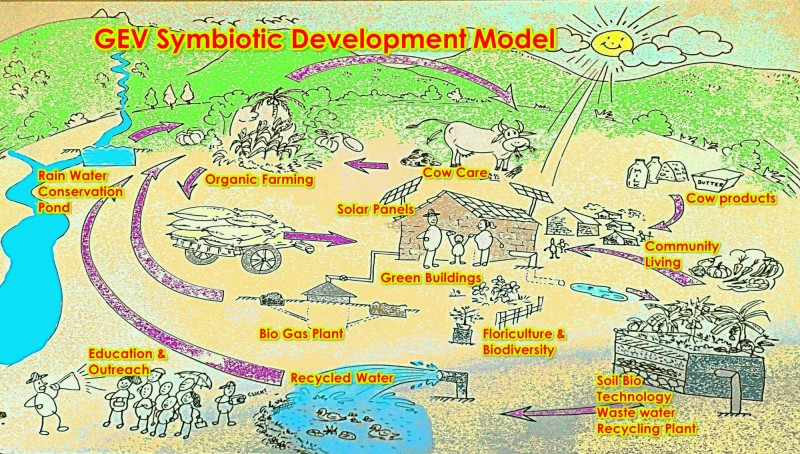
Source: http://www.ecovillage.org.in/our-activities#_AE
Food - Organic farming
Govardhan eco village promotes organic chemical free farming. Organic fertilizers and pesticides, crop rotation, composting, multi cropping, mulching are some of the methods they use for environment friendly farming. The old traditional techniques which are still effective are being revived for pest control. It has been ranked among the top 100 agricultural innovators in India for extensive use of permanent raised vegetable beds by SFAC (Small Farmer’s Agribusiness consortium).

Source: https://ecovillage.org.in/wp-content/Downloads/Organic-Farming.pdf
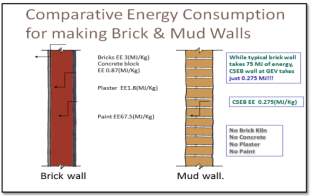
Green building technology
The aim of this community in construction is to reduce the amount of resources and waste generation that go into it. GEV focuses on using local and low embodied energy materials. Mud construction, stabilized earth blocks, cob and rammed earth built structures are promoted which have less than 1% energy compared to conventional building materials. The materials were sourced from within 100km radius. It followed the GRIHA norms for carrying out the zoning, construction and maintenance. It received a 5 star rating at the 5th GRIHA summit.
Waste management
GEV has formulated an award winning mechanism for waste disposal called ‘Symbiotic Recycling’. It is based on the concept that waste for one process should be used as raw material for another. In other words, what comes from Nature in one form goes back to its proper place in Nature in a different form after being processed and used (Govardhan EcoVillage, Waste Management n.d.).
It uses a number of techniques from waste management ranging from the old reliable techniques to new innovative ones. Waste from other systems is reused or recycled here to create a symbiotic relationship within the community. Following are some of the techniques they use for waste management:
Biogas plant for converting organic waste into fuel for cooking and the slurry is used as natural fertilizer.
- Soil biotechnology is used for human waste and agriculture. In this process, water is used for waste collection and soil is used for decomposition.
- Construction waste is used to make permanent raised beds (PRBs) for farming. They are fertile for growing vegetables. Construction waste is also reused in repairing roads.
- Waste cardboard and cloth are used as mulch in the agriculture fields. It is spread upon the field to retain moisture and reduce erosion.
- Cement bags and plastic bags are used to store mud and compost and wastes which need to be converted into manure.
Water conservation
To collect and conserve water GEV first did research about the geographical recharge and discharge points in the village through various tests and surveys. This helped them to recognize the measures that could use in recharging and using groundwater. Some of the measures they used were, i) deepening existing ponds and wells, ii) digging new wells and borewells according to the data collected about recharge and discharge points, iii) constructing catchment pits according to the recharge points.
Energy sources
GEV is employing some new and innovative techniques for energy production along with other renewable energy sources. The renewable energy sources include a biogas plant and a solar power plant. Since the village produces a lot of organic waste from farming and other means, the 30cum. plant gets enough raw materials. GEV also receives adequate sunlight for the plant to give optimum output. Hence, both of these are able to meet the major requirements of the community.
Other than these GEV uses animal powered systems in submersible pumps, flour mills and oil expeller. The animal power is converted and these animals are managed efficiently. This creates an efficient small-scale energy system. Bullock carts are used for transportation which again reduced demand of non-renewable energy sources.
Achievements and Challenges
(On discussion with Chitra Vishwanath, Biome and Mr. Rakesh Panda, GEV)
GEV has been majorly successful in in achieving its goals at various levels of sustainability. It has become a center for spreading awareness and knowledge about various aspects of sustainability. In this case it was easy to work with the community. The bigger challenge was to practically execute the ideas and training the people to do this. Another challenge was to create a system of monitoring so the gains and losses.
The areas dealing with energy efficiency, water efficiency and sustainable materials were more easily approachable. The government policies are still far from reaching the local people. One same policy might not work in case of different types of projects.
SILUA TEK, MADHYA PRADESH
Silua Tek is a small rural village in Jabalpur, Madhya Pradesh and has poor economic state. The 200 inhabitants displaced by the construction of Bargi Dam in 1970 live on a daily income of less than US$ 5 per family. The basic problems in the village were unavailability of clean water and toilets. The village had only a single source of water which was also getting polluted. This led to many health problems in the village on a regular basis.
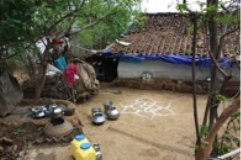
Figure 2 A House in the village
Saamarth Social organization, under EcoSoftt took initiative for betterment of these aspects in the village by engaging the local people in the process. Thus, by using low cost methods and labor contribution of the village people (shramdan), they were able to successfully meet basic water requirements and living standards.
The approach was by involving each and every member of the village with full commitment towards construction and maintenance. A council within the village takes responsibility for managing the work.
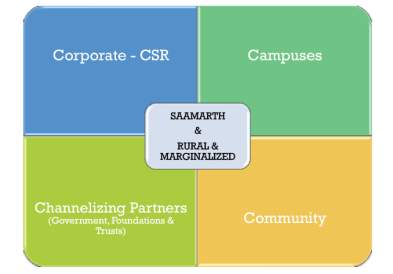
ECOSOFTT OPERATING MODEL- UNIQUE C4 APPROACH
SOURCE: http://ecosoftt.org/wp-content/uploads/2014/11/Social-Impact.pdf
COMMUNITY- Empowering the community to strengthen the basis of settlement. This helps them in focusing and realizing their needs.
CAMPUSES- Involving young people in campus works and vocational training.
CHANELLING PARTNERS- Using government resources and support from NGOs for providing complimentary resources.
CORPORATE CSR- Engage corporates.
The community has been able to achieve the following benefits:
- Individual toilets and bathrooms for each home with water supply.
- Continuous water supply with water meters and fee. A water tank network managed by the community with each home having its dedicated water tank.
- Integrated management of water and wastewater (DEWAT) which eliminates the septic tanks and soak pits.
- The Mizuchi & Terra: containerized used water recovery system 25000LPD for recharge, reuse and discharge.
- Solid waste management practices.
- Over 1000m of underground sewage and drainage network with 35 chambers.
- Because of cleaner water and better sanitary conditions, the health quotient of residents has increased.
- Green practices involving tree plantations and vocational trainings to spread awareness.
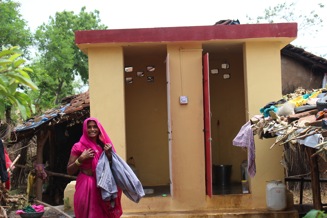
Figure 2 Newly constructed toilets and bathrooms
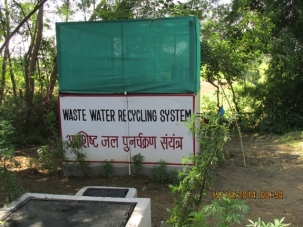
Figure 3 Aerobic BioFilter without Sludge
Achievements and challenges
(On discussion with Mr. Stanley Samuel, EcoSoftt and Mr. Gaurav Chandra, Saamarth)
After talking to the authorities at Saamarth and EcoSoftt it was noted that the community has transformed greatly after the implementation of schemes. Since each family was supposed to take responsibility of the resource they were more engaged in executing and maintaining. The living standards have improved as the residents are healthier and can engage more successfully in their jobs; similarly the number of children going to school has increased. Women are also starting their own cottage industries and small businesses and hence consumption goods are produced locally.
The problems faced in the execution were mainly winning the trust of the local people since they had been deceived many times by the unsuccessful government policies. Though once they were convinced that program is going to help them, they came forward and did a tremendous job. The government policies are not very successful because they lack coordination and approachability. There are different programs for different problems but they do not go together. For villages like Silua Tek it is very important to have an integrated program for change to take place. Winning the trust of local people is most important to engage them in the program.
Though the goal of self-sustainability is still far for this community, the village bagged an award in Smart Village category in the Smart City India Awards 2017. The incredible efforts shown by the villagers with limited resources is appreciable and an inspirational beginning towards a sustainable future.
PARSODA, MAHARASHTRA
The village is situated in the Aurangabad district of Maharashtra and has a population of 5000. It lays in an area of acute rainfall and every year inJanuary the village experiences water scarcity. There was no planning of water of water conservation and cleanliness and hygiene was also lacking. There were no toilets or waste management system.
Eco Needs Foundation took the initiative to approach the villagers and bring them together to solve this problem. They said that bringing the people together was the biggest challenge since they were not aware of how their problems could be solved. It was a big task to explain them how these conservation practices could benefit them.
Water and Sanitation
With the involvement of the village people, the foundation was successful in carrying out many water conservation techniques. This greatly solved the water problems in the village. They constructed Farm Ponds in the fields, desiltation of local water resources and maintenance of weirs. This has ensured availability of water for drinking purpose.
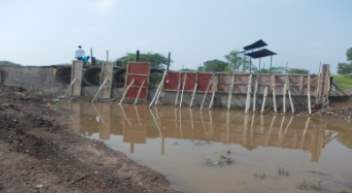
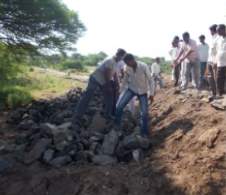
Figure 3 Water conservation structure at Parsoda
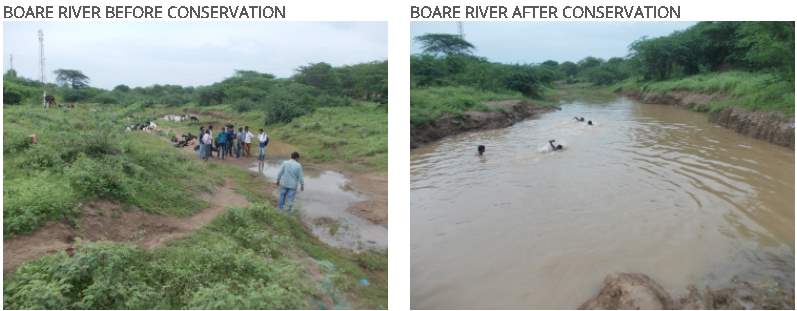
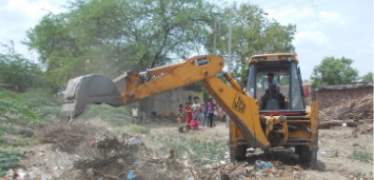
They also constructed individual toilets which solved the sanitation problem. The villagers were made aware of the problems that are caused due to open defecation which also motivated them to maintain these toilets. Dry toilets were introduced to deal with the problem of water scarcity. Health hygiene and cleanliness of surroundings was promoted and people have adopted the practices of systematic disposal of domestic solid waste and agricultural solid waste. The village comes under the Adarsh Gaon Yojana of Maharashtra government and receives annual monetary aid under the same.
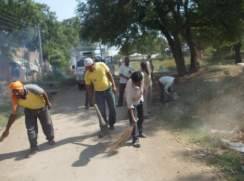
Figure 4 Cleanliness measures in the village
The villagers were made aware about the importance of cleanliness and an initiative was taken to clean the village. Machines were used to clean debris which was difficult to clean manually.
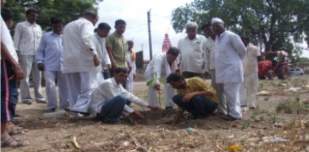
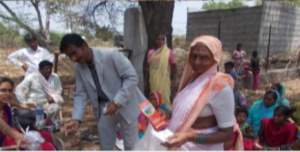
Figure 5 Workshops for creating awareness
A CASE STUDY OF AUROVILLE, TAMIL NADU
Mona doctor-Pingel says,
‘Auroville is conceived as an urban experiment to undertake the work of the ‘evolution of consciousness’ in a society that would concretely experiment with the challenges of economy, sociology, environment and culture while seeking spiritual life.’
Auroville is a community in Tamil Nadu, India, which follows sustainability as a way of life. They believe that a stable community system is essential for achieving spiritual sustainability. The physical idea of Auroville started in 1965 from a sketch made by the mother which evolved into the galaxy master plan of Auroville. People began to join the community and as they learned about the challenges they were going to face, they started finding their own small scale solutions to these situations. They began planting saplings to prevent sand storms and heat of the barren land. Small scale, labor intensive construction along with food production, reforestation and small cottage industries began to form and seemed sustainable compared to the ornate vision of the Mother. Auroville, even today, remains an arena of experimentation and transformation at all levels of life and humanity, and this is probably the real challenge of its architecture and planning (Mona Doctor- Pingel, 2012).
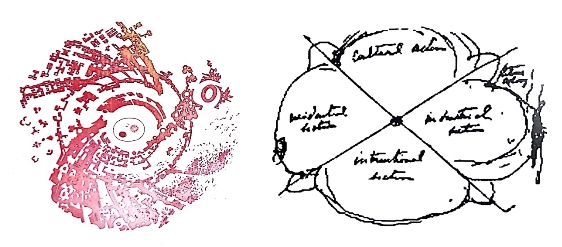
(Doctor-Piingel, 2012)
Left: Galaxy plan of Auroville, 1967, divided into four zones. Right: sketch given by the mother explaining the four zones of Auroville.
Its predicted population in 1968 was 50,000. In May 2016 Auroville had a population of 2,487 with 1854 adults and 633 children from 49 different countries (Census, Auroville population May 2016). The villages around Auroville are also connected with the activities happening in Auroville.
The land is divided into four regions, the residential, industrial, cultural and international. They surround the center and heart of Auroville, which is the peace area. The peace area comprises of the Maitri mandir and gardenscapes. All this is surrounded by a green belt on the edge which is used for growing orchards, forests and organic farming.
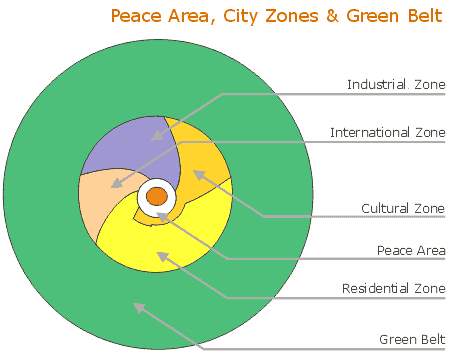
(Source: https://www.auroville.org/contents/95)
Construction practices
Stabilized Earth Blocks have been widely used for construction of houses. This is a sustainable practice because the embodied energy of earth blocks is very less. Use of ferrocement for water tanks and roofs also serve as an alternate practice towards less energy consuming infrastructure. Mona Doctor- Pingel (2012) describes Golconde- a dormitory for the disciples of Sri Aurobindo built between 1937 and 1945. The building is a brilliant response to climate and place, with specially fabricated asbestos louvers and custom made fittings built mainly by the unskilled volunteers of the Ashram.
Roads and transportation
The inner areas are not accessible by cars. They only have pedestrian and vehicular access. The reduced use of cars decreases pollution and the need to construct or maintain any vehicular roads.
Water resources and waste water treatment
The water resources are mainly underground which are replenished by an intricate network of water management and recharge. Check dams and catchment ponds are used to make sure a continuous supply of water is available. A dam has been constructed in utility canyon to harvest the rain water that otherwise flows into the Bay of Bengal.
Waste water treatment is an important part of a sustainable community. Auroville has septic tanks and soak pits for this purpose. Auroville has more than 60 natural wastewater treatment systems. Auroville has several units which are actively implementing waste water treatment systems, including CSR, Aqua engineers, and others. Water treatment includes three phases- pre-treatment, main treatment and post treatment.
One of the methods used in Auroville is the Decentralized Wastewater System (DEWATS) also known as constructed wetlands and root zone treatment system.
Energy requirements
Solar electricity and heaters are used to meet energy requirements.
Energy from waste
Auroville converts its organic waste into energy using biogas plants. The small farms in Auroville produce wastes like cowdung, which can be easily used in these plants. They use prefabricated ferrocement biogas tanks which can be used for small scale farms and producing biogas of 2-4m3 per day.
Land reclamation
Auroville has transformed near barren land into lust green area, gaining international recognition for its wasteland reclamation. Ecosystem has been revived by plantation of over 2 million forest and hedge trees, fruit and fuel trees. In addition, Aurovillians promote the pesticides free agriculture and sustainable agricultural practices.
Waste treatment
Auroville’s EcoService is responsible for managing solid waste in the city. They collect waste from households, guest houses and restaurants and process them in a sorting shed. Currently, they collect waste from approximately 2/3rd of Auroville of which about 60% is recycled and 40% is landfilled. Their objective is to reduce the impact of waste on the environment and promote ‘waste to energy’ ideology.
Auroville is an eco-village which has been successful in its quest for sustainability to a great extent. The purpose of Auroville is to create a society which lives in harmony with nature and with each other. People from varying cultures living together is a challenge in itself. The solutions they have come up with for land regeneration have been extremely effective. It has had a huge effect on the surrounding villages by spreading awareness regarding various sustainable practices like composting, lobbying against pesticide use etc.
NAVADARSHANA, TAMIL NADU
Navadarshanam is a small community founded in 1990 located in rural Tamil Nadu. Their main principles are creating an ecological balance as well as spiritual balance. Their main focuses are to preserve ecology, alternative energy sources, water harvesting, sustainable farming and healthy living.
Green buildings and Energy
One of the goals of the community is to reduce energy needs and use alternative energy sources so that the village consumes no energy from outside. While construction they aim at using local materials with minimum energy footprint and stressing on techniques that involve minimum machinery.
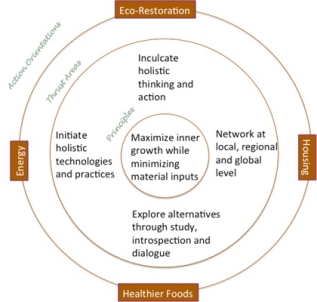
Figure 6 Navadarshan model
Source:http://www.navadarshanam.org/web/navadarshanam/whoweare
Organic farming and Permaculture
The major goal is create an eco-system such that the result is net positive which each cycle. They approach farming by traditional methods which involve zero inputs from outside. They grow seasonal and local varieties to achieve sustainability and avoid any kind of machinery usage.
Water harvesting and management
The aim is to conserve and harvest water by optimizing domestic water usage. They conserve and harvest water using structural water harvesting systems. Broad scale water conservation to recharge ground water is also important.
Wilderness preservation
This is one of the major goals of the community. Natural regeneration has caused the barren land to turn into a forest and host a variety of species of birds, insects and smaller mammals. There are rules that control the involvement of humans in these areas
Assessment of communities based on identifies parameters
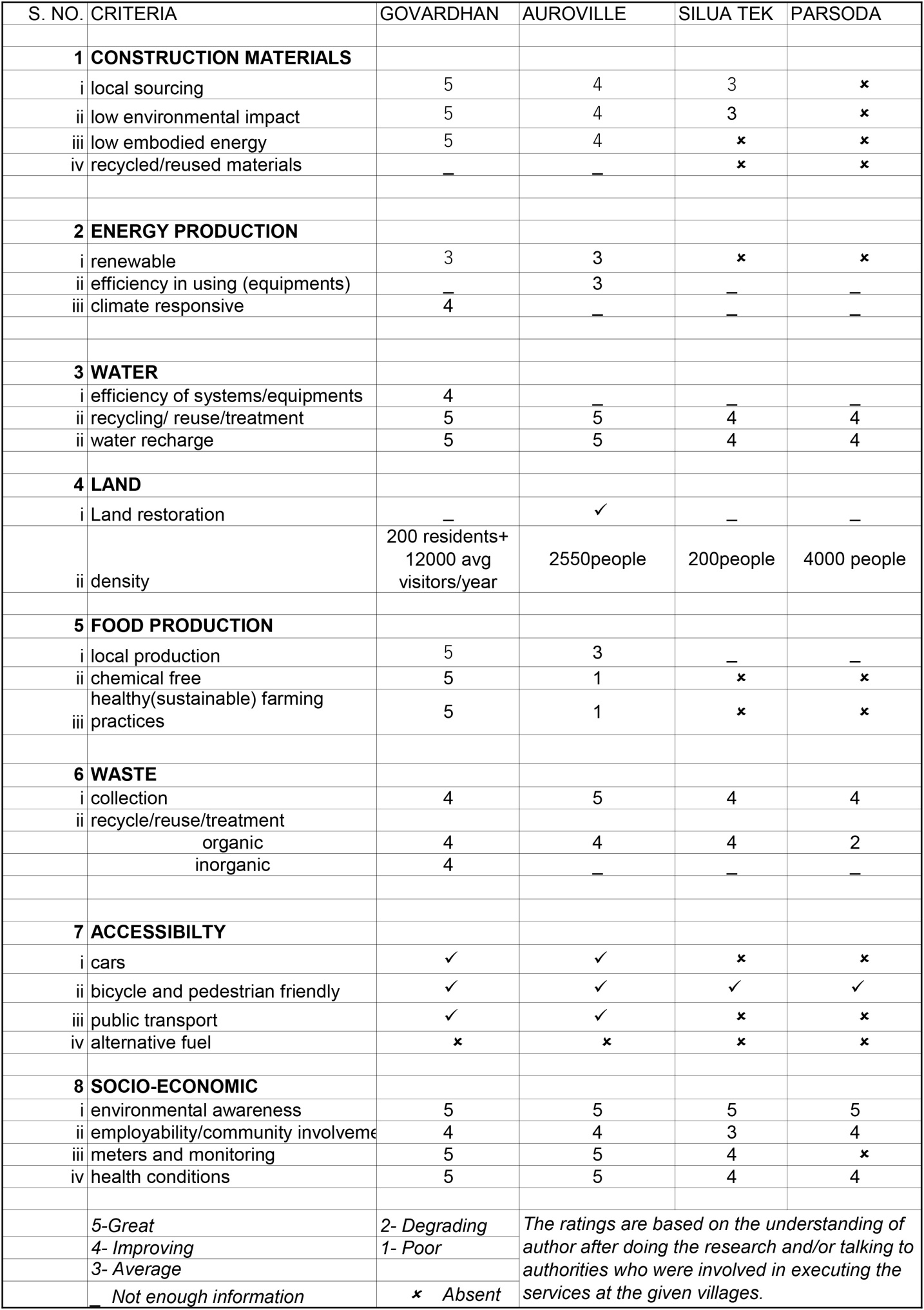
ACHEIVEMENTS AND CHALLENGES - SUSTAINABLE COMMUNTIES IN INDIA
Setting a goal
The communities discussed in the research have been successful to a great extent to achieve their set goals. The goal for each community was different. It changed based on the geographical region, economic and social background and awareness among people. The geographical region determines the goal because different geographical regions have different living conditions and hence face different challenges. Communities with poor economic backgrounds are striving to achieve even basic living standards. Hence their goals are currently limited to improving the water and sanitation in the locality. Prof. Priyanand Agale (Eco Needs Foundation) pointed out that the people do not have enough money to buy organic fertilizers and hence they go with chemical fertilizers. They do not have the scope to think about sustainability because they have neither the resources nor the awareness to achieve it. Initiatives for such communities are also generally taken by an outside organization which aims at improving the conditions of these villages. The local people are often skeptical about such programs. It is difficult to convince them of the benefits that these schemes can bring them. However, once the implementation starts the local people have shown incredible efforts in producing positive results.
On the other hand communities like Auroville and GEV, which were created in a planned manner, are comparatively more self-motivated. They have wider goals of sustainability and can focus on areas like energy conservation and agricultural sustainability. They even host huge crowds of tourists which in turn help funds their daily activities. In such communities the local people are more aware of all the practices and strive to achieve a higher standard of living. Mostly they have a spiritual background.
Challenges faced
The most initial problem faced by such communities is establishing a network of trust within the community. This is a bigger challenge when the people are economically weak and have little resources to feed to the initiative. Training the people initially to carry out the plan and monitoring is a difficult task. Practically executing the ideas on the site comes as a major challenge in such programs. One problem on a larger scale is that there is no common platform to share the ideas and information to make better schemes. There is no exchange of ideas between such communities, successful or emerging. Managing the finances and manpower is also challenge that needs to be overcome.
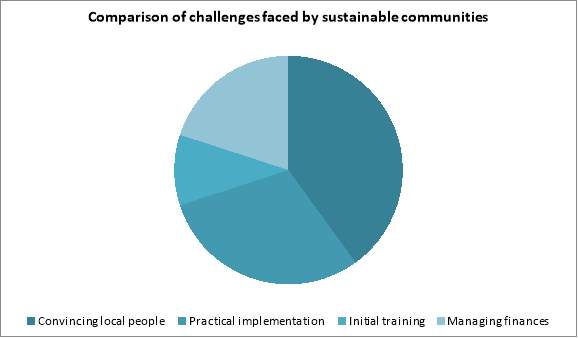
Achievable areas
To achieve the goal of sustainable community, it is important to go back to the ways of nature. Understanding the local ecosystem and not causing hindrances to the natural processes is vital. Ways of living can be changed so that the effect on environment is minimum. It is also important to discuss the ideas rationally and find a solution.
For communites which are more aware about the importance of sustainability it is easier to look at wider view. For them, goals like energy efficiency, water efficiency and sustainable materials are approachable. Communities with little awareness aim at short term goals. Long term goals also require more commitment and financial support which is generally missing here.

Government policies
Government policies have been of little aid to these developing communities. Most of the times, the local people are unaware of how to approach these policies. Even when tried they are difficult to crack. The implementation of these schemes is not done appropriately by the officials at the local level. Moreover, the policies are for individual programs (eg. Housing, water, toilets) but there in not integrated program which can bind them. For the overall development of these communities, it is important to develop all aspects of living. A centralized policy might not work for a huge country like India where the contexts and challenges are widely varying in different areas.
BIBLIOGRAPHY
Barton, Hugh, Gilchrist, Alison, Hathway, Tony, Hopkins, Rob, Houghton, Trevor, Kleiner, Deborah et al. (2000), Sustainable communities: the potential for eco-neighborhoods, Earthscan, UK.
Barton, H., Grant, M., & Guise, R. (2010). Shaping Neighborhoods: For local health and global sustainability. New York: Routledge.
Calthorpe, M (1993) The Next American Metropolis: Ecology, Community and the American Dream, Princeton Architectural Press, New York
Doctor-Piingel, M. (2012). Auroville architects monologue series- Poppo Pingel. Ahmedabad: Mapin publishing pvt. ltd.
Edwards, Brian 2001, Rough guide to sustainability, Earthscan, London.
Gautam, Ashish 2010, Building sustainable rural housing in India, unpublished dissertation, School of Planning and Architecture, New Delhi.
Goswami, P.B. 2009, Sustainability in the common man’s house-form in Assam, unpublished dissertation, School of Planning and Architecture, New Delhi.
Layard, Antonia, Davoudi, Simin, Batty, Susan 2001, Planning for a sustainable future, Spon press,London.
Littlewood, M (1998) The Forest Village
Pitts, Adrian 2004, Planning and Design Strategies for Sustainabilty and Profit, Architectural Press, Great Britain
Auroville in brief n.d., viewed July 22 2017, www.auroville.org/contents/95
www.smartcitiesindia.com/smart-village-conclave.aspx
www.smartcitiesindia.com/smart-cities-india-awards-2017.aspx
http://www.hunnarshala.org/kacwww.smartcitiesindia.com/smart-village-conclave.aspx
www.smartcitiesindia.com/smart-cities-india-awards-2017.aspxhchh-earthquake-rehabilitation.html
http://www.biome-solutions.com/project/
http://www.teriin.org/index.php?option=com_ongoing&task=details&pcode=2016MC07&Itemid=145
http://www.ecovillage.org.in/our-activities#_AE , 19 SEP 2017
http://www.grihaindia.org/files/GRIHA-LD-V2015.pdf , 8 oct 2017
https://www.usgbc.org/articles/getting-started-nd , 8 OCT 2017
APPENDIX
QUESTIONS:
GENERAL QUESTIONS
- To what extent do you feel your community has been successful in achieving its goal? What do you think is the best aspect of your community?
- What are the challenges you faced while planning and executing the different aspects of the community? What are the areas which are more difficult to deal with compared to others?
- What are the areas which can be easily achieved/ approached while planning a sustainable community? Which aspects perform better in terms of producing results?
- What are the government policies (if any) that have helped you achieve your agendas? What is the scope of sustainable communities in India?
SPECIFIC QUESTIONS (Specific questions for specific people)
- How much of your total water requirements are met from your collection schemes and recycled water?
- How much of your food requirements are met by your own farms? How much do you source from markets outside the community? Do you use farming practices that maintain the quality of soil? (e.g. The type of fertilizers, pesticides)
- What amount of your total energy consumption comes from solar/ biogas plants or other alternative sources?
- Where do you source the construction materials for you buildings?
- What is the main mode of transportation within the community? (E.g. cars, bicycles, pedestrians, public transport?)
- What is the source of livelihood for people in the community? Are they self-employed, dependent or migrate outside?

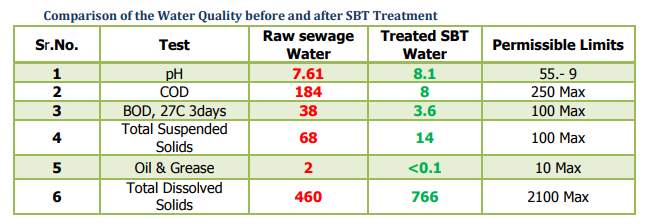
Source: https://ecovillage.org.in/wp-content/Downloads/Waste-Management.pdf
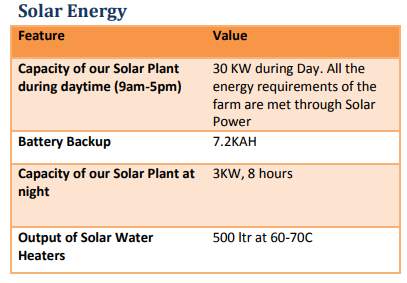

Source: https://ecovillage.org.in/wp-content/Downloads/Alternative-Energy.pdf
Cite This Work
To export a reference to this article please select a referencing stye below:
Related Services
View allRelated Content
All TagsContent relating to: "Sustainability"
Sustainability generally relates to humanity living in a way that is not damaging to the environment, ensuring harmony between civilisation and the Earth's biosphere.
Related Articles
DMCA / Removal Request
If you are the original writer of this dissertation and no longer wish to have your work published on the UKDiss.com website then please:




